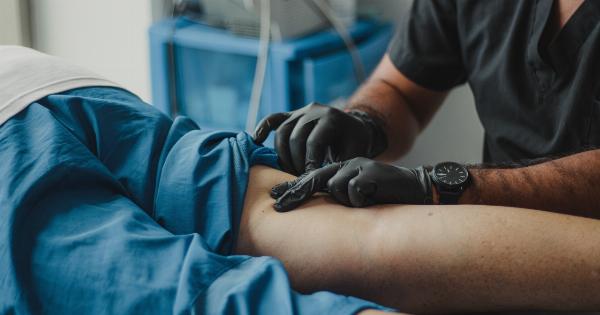Knee arthritis affects millions of people worldwide, causing pain, stiffness, and reducing mobility. Traditional treatments for knee arthritis, such as medication and surgeries, may not be effective or may come with risks and complications.
Fortunately, many non-invasive options are available to manage knee arthritis symptoms and improve quality of life. In this article, we will explore some of the most effective non-invasive treatments for knee arthritis.
Exercise
Exercise can help relieve knee arthritis pain and stiffness while strengthening the muscles that support the knee joint.
Low-impact exercises such as walking, cycling, and swimming are recommended as they can increase range of motion without putting too much stress on the knee. Some exercises that can be helpful for knee arthritis include:.
- Stationary bike riding
- Leg curls and extensions
- Wall squats
- Clamshells
It is important to start slowly and gradually increase the intensity of the exercises. A physical therapist can develop a tailored exercise program that is safe and effective for an individual with knee arthritis.
Physical Therapy
Physical therapy is another non-invasive option for knee arthritis. A physical therapist can teach an individual how to move and perform activities in ways that may help reduce knee pain and prevent further damage to the joint.
Additionally, a physical therapist can provide exercises that are tailored to an individual’s specific needs and monitor progress.
Supplements
Supplements such as glucosamine, chondroitin, and omega-3 fatty acids have been found to be helpful for some people with knee arthritis.
Glucosamine and chondroitin may help reduce pain and improve joint function by providing building blocks for cartilage repair. Omega-3 fatty acids may help reduce inflammation and pain associated with knee arthritis. It is important to talk to a healthcare provider before taking supplements as they may interact with other medications or have side effects.
Acupuncture
Acupuncture involves the insertion of thin needles into specific points on the body. It has been found to be helpful for some people with knee arthritis by reducing pain and improving mobility.
Acupuncture may help stimulate the release of natural pain-relieving chemicals in the body and improve blood flow to the affected area. It is important to choose a licensed and experienced acupuncturist and discuss any concerns with a healthcare provider before starting acupuncture.
Weight Management
Excess weight can put additional stress on the knee joint, leading to increased pain and damage. Losing weight through diet and exercise can help reduce knee arthritis symptoms and improve joint function.
A healthcare provider can help develop a weight loss plan that is safe and effective for an individual with knee arthritis.
Heat and Cold Therapy
Applying heat or cold to the affected knee can help relieve pain and stiffness. Heat can help increase blood flow to the area and reduce muscle tension, while cold can help reduce inflammation and numb the area.
It is important to use heat and cold therapy safely and correctly to avoid burns or frostbite.
Assistive Devices
Assistive devices such as braces, splints, and canes can help protect the knee joint and improve mobility. Braces and splints can provide support and stability to the knee, while a cane can help reduce the stress on the joint and improve balance.
It is important to choose the right assistive device for an individual’s specific needs and use it correctly to avoid further injury.
Meditation and Mindfulness
Meditation and mindfulness practices can help reduce stress and anxiety associated with knee arthritis, which may in turn reduce pain and improve quality of life.
Mindfulness exercises can involve focusing on the present moment, practicing deep breathing, and using visualization techniques. A healthcare provider or a meditation instructor can help develop a mindfulness practice tailored to an individual’s needs.
Surgery as a Last Resort
Surgery, such as a knee replacement, is usually considered a last resort for knee arthritis. It may be recommended if non-invasive treatment options are not effective or if the condition is severe and significantly impacts quality of life.
It is important to talk to a healthcare provider about the potential risks and benefits of surgery and to discuss any concerns.
Conclusion
There are many non-invasive treatment options for knee arthritis, including exercise, physical therapy, supplements, acupuncture, weight management, heat and cold therapy, assistive devices, meditation and mindfulness, and surgery (as a last resort).
It is important to discuss all treatment options with a healthcare provider and choose the ones that are safe and effective for an individual’s specific needs. By managing knee arthritis symptoms, it is possible to improve quality of life and maintain mobility.





























